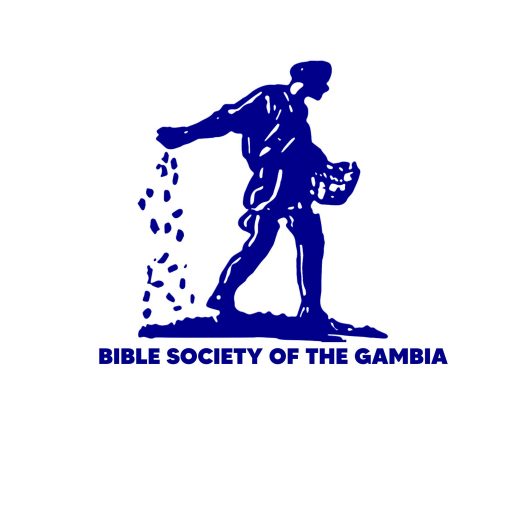Haman Plans To Destroy the Jews
1 Later, King Xerxes promoted Haman the son of Hammedatha to the highest position in his kingdom. Haman was a descendant of Agag, 2 and the king had given orders for his officials at the royal gate to honor Haman by kneeling down to him. All of them obeyed except Mordecai. 3 When the other officials asked Mordecai why he disobeyed the king's command, 4 he said, “Because I am a Jew.” They spoke to him for several days about kneeling down, but he still refused to obey. Finally, they reported this to Haman, to find out if he would let Mordecai get away with it.
5 Haman was furious to learn that Mordecai refused to kneel down and honor him. 6 And when he found out that Mordecai was a Jew, he knew that killing only Mordecai was not enough. Every Jew in the whole kingdom had to be killed.
7 It was now the twelfth year of the rule of King Xerxes. During Nisan, the first month of the year, Haman said, “Find out the best time for me to do this.” The time chosen was Adar, the twelfth month.
8 Then Haman went to the king and said:
Your Majesty, there are some people who live all over your kingdom and won't have a thing to do with anyone else. They have customs that are different from everyone else's, and they refuse to obey your laws. We would be better off to get rid of them! 9 Why not give orders for all of them to be killed? I can promise that you will get tons of silver for your treasury.
10 The king handed his official ring to Haman, who hated the Jews, and the king told him, 11 “Do what you want with those people! You can keep their money.”
12 On the thirteenth day of Nisan, Haman called in the king's secretaries and ordered them to write letters in every language used in the kingdom. The letters were written in the name of the king and sealed by using the king's own ring. At once they were sent to the king's highest officials, the governors of each province, and the leaders of the different nations in the kingdom of Xerxes.
13 The letters were taken by messengers to every part of the kingdom, and this is what was said in the letters:
On the thirteenth day of Adar, the twelfth month, all Jewish men, women, and children are to be killed. And their property is to be taken.
14-15 King Xerxes gave orders for these letters to be posted where they could be seen by everyone all over the kingdom. The king's command was obeyed, and one of the letters was read aloud to the people in the walled city of Susa. Then the king and Haman sat down to drink together, but no one in the city could figure out what was going on.
Hamani ye feeroo siti ka Yahuudoolu kasaara
1 Kabiriŋ ñiŋ kuwolu keta, Mansa Ahasuweru naata Hamani buuñaa, Hamani meŋ mu Hammedata dinkewo ti, aduŋ a bota Akaki bonsuŋo le bala. Mansa ye ate le ke a la maralilaalu bee ñaatonkoo ti. 2 Mansa la dookuulaalu bee mennu be mansa la koridaa daa to, ka ì fammajii Hamani ye le, kaatu mansa le ye ñiŋ yaamaroo dii ì la. Bari Moridekayi buka soŋ a fammajii la a ye. 3 Bituŋ mansa la dookuulaalu mennu be a la koridaa daa to, naata a fo Moridekayi ye ko, “Muŋ ne ye a tinna i maŋ mansa la yaamaroo muta?” 4 Luŋ-wo-luŋ ì ka diyaamu a ye le, bari a buka soŋ ka ñiŋ yaamaroo ke. Bituŋ ì naata a kumoo fo Hamani ye, ka a juubee fo Moridekayi la ñiŋ kebaaroo be muña noo la le, kaatu a ko ì ye le ko, ate mu Yahuudoo le ti. 5 Kabiriŋ Hamani ye a je ko, Moridekayi buka soŋ a fammajii la a ye, wo kuwo naata a kamfaa baake. 6 Bari a maŋ lafi ka Moridekayi dammaa faa. Ì ye a fo a ye le, Moridekayi la moolu mu siyo meŋ ti, bituŋ Hamani lafita Yahuudoolu Moridekayi siyo bee kasaara la, mennu tarata Mansa Ahasuweru la bankoolu kaŋ.
7 Mansa Ahasuweru la mansayaa sanji taŋ niŋ fulanjaŋo saŋo kari foloo la ì ka a fo meŋ ye Nisani, ì ye puri fayi, wo le mu kuuriŋ fayoo ti, aduŋ a keta Hamani ñaa la le, ka luŋo tomboŋ aniŋ karoo. Kuuriŋo naata beŋ saŋo kari taŋ niŋ fulanjaŋo le fee, ì ka a fo meŋ ye Adari.
8 Bituŋ Hamani ko Mansa Ahasuweru ye ko, “Sii siifaa doo le be janjandiŋ ǹ kono, mennu tarata i la bankoo bee kaŋ, aduŋ ì la luwaalu niŋ moolu taalu maŋ kiliŋyaa, aniŋ ì buka ite mansa la yaamaroo muta. Ka soŋ ì la kuwo la, wo te ke la ite mansa ye buuñaa ti. 9 Niŋ a diyaata ite mansa ye, kankulaaroo ñanta ke la le ka ì kasaara, aduŋ m be kodiforoo kilo wuli keme saba niŋ kilo wuli taŋ naani le ke la i la kodibuŋo to ka a dii dookuulaalu la mennu marata kodibuŋo ma.”
10 Bituŋ mansa ye a la tampurilaŋ konnaa bondi a buloo to, a ye a dii Hamani la Hammedata dinkewo Akaki bonsuŋo, Yahuudoolu jawoo. 11 Mansa ko Hamani ye ko, “Kodoo maabo, meŋ diyaata i ye, i si wo ke wo moolu la.”
12 Bituŋ kari foloo tili taŋ niŋ sabanjaŋ luŋo la, ì ye mansa la safeerilaalu kumandi. Bituŋ a ye kankulaaroo dii ì la ka a yelemandi kaŋolu bee to, aniŋ ì la safeeriñaalu mennu bee be bankoo kaŋ. Ì ye ì kii maralilaalu, kumandaŋolu aniŋ siyolu bee la kuntiyolu kaŋ. A safeeta Mansa Ahasuweru le too la, aduŋ a tamputa a la mansakonnaa le la. 13 Kiilaalu ye ñiŋ kayitoolu bee janjandi mansa la kumandaŋ bankoolu bee kaŋ ne. Ñiŋ ne be safeeriŋ jee ko, Yahuudoolu ka bo dindiŋ, keebaa, musoolu aniŋ dindiŋ mereŋolu bee ñanta faa la le ka kasaara tili kiliŋ, aduŋ ì ñanta ì la feŋolu buusi la ì bulu le. Wo ñanta ke la kari taŋ niŋ fulanjaŋo tili taŋ niŋ sabanjaŋo luŋo le la, Adari karoo kono. 14 Ñiŋ kuwo kankulaari kayitoo ñanta ke la luwaa le ti ñiŋ kumandaŋ bankoolu bee kaŋ, aduŋ sii-wo-sii la moolu ñanta a loŋ na le, fo ì si tara pareeriŋ wo luŋo la.
15 Mansa la yaamaroo kaŋ, kiilaalu tariyaatoo taata. Aduŋ kankulaaroo keta Susa Tatoo fanaa kono le. Hamani niŋ mansa siita ì be dolomiŋo la, bari Susa saatee moolu be jaakaliriŋ ne.

